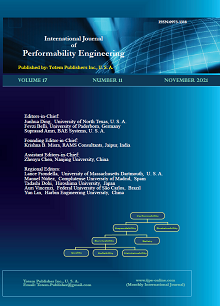-
A Survey on Fusion of Internet of Things and Cloud Computing
- Gayathri D and S.P. Shantharajah
-
2021, 17(11):
946-954.
doi:10.23940/ijpe.21.11.p5.946954
-
 Abstract
Abstract
 PDF (325KB)
PDF (325KB)

-
References |
Related Articles
The Internet of Things (IoT) is rapidly approaching its capability as the next Digital uprising. It enables smart objects to interact and collaborate, allowing us to share information that helps us to maintain a healthy lifestyle. Cloud computing, on the other hand, delivers on-demand, flexible, and adaptable network access, permitting devices to access computational resources which facilitates the integration of unstructured information from multiple data sources. Cloud and IoT services have profound influences that can have a significant effect on today's ever-growing digital life, as well as the need to address a myriad of challenges for each system, namely scalability, security, and reliability with real-world objects in a more versatile and decentralized manner. Therefore, IoT requires more data storage and computation power. Cloud computing delivers on-demand accessibility of network assets especially for data storage and computing power to share the resources. Several architectures have been undergone with the literature to integrate these two technologies by using current computing paradigms, namely FOG and EDGE computing. This platform can use Cloud resources and services to gather, transmit, analyze, process, and store data created by a variety of sources. With this integration, we can resolve storage and computation issues. Moreover, in many applications, the integration plays a vital role in producing automated services and solutions without any delay.

